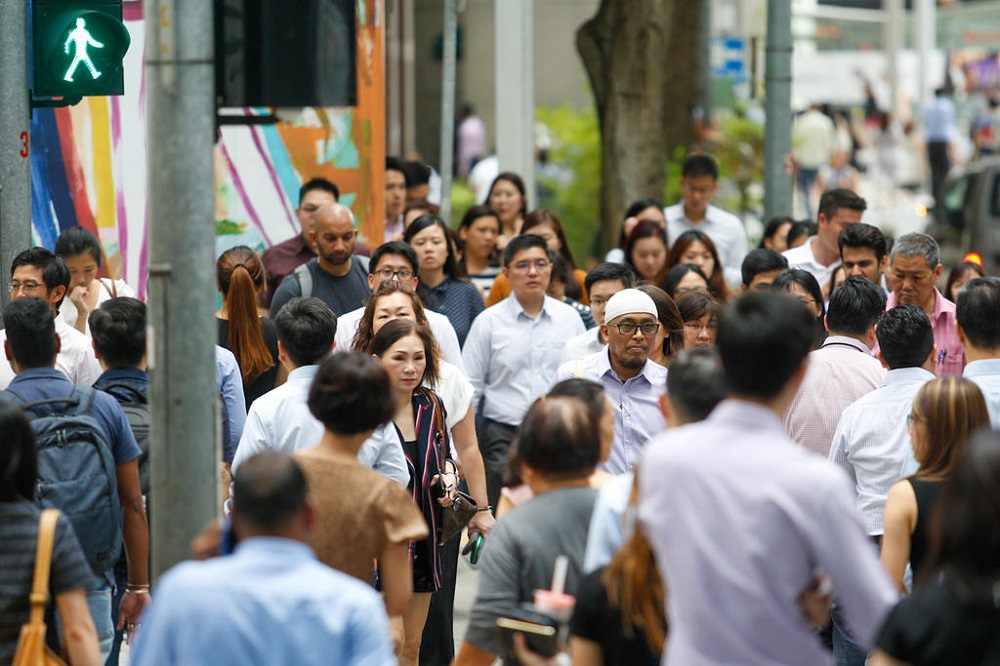SINGAPORE, May 18 — Building an online marketplace for enterprises, establishing Singapore as a sustainability hub and strengthening international partnerships, especially with its Southeast Asian neighbours — these are some of the recommendations a task force convened slightly more than a year ago to navigate Singapore’s post-pandemic future has come up with.
These recommendations were laid out by the Emerging Stronger Taskforce in a 118-page report released yesterday.
The key recommendations are:
Create new virtual frontiers
- Having a virtual marketplace for Singapore businesses to sell their goods and services and create new markets overseas
- Being a hub for the world’s trade virtually that enables full traceability of supply chains and fully digitised trading documentation
- Coming up with digital tools for the safe resumption of travel
Establish Singapore as a sustainability hub
- Set up the city-state as a carbon and trading services hub
- Growing the agritech sector to be land and labour productive
- Digitalising the built environment sector
Support the growth of large local enterprises (LLE) and a strong resident workforce
- Enable Singapore companies to scale up, including small — and medium-sized enterprises
- Leveraging “queen bee” companies to raise the skills of the wider industry sectors
- Using commercial frameworks to pull along smaller companies
- More “queen bee” companies to pursue collaborations with other companies to help them in digital transformation
- Remain open to skills from abroad to complement the local workforce
- Businesses work with unions, training providers and universities and polytechnics to adopt a predictive or preventive upskilling approach
- Promote training recommender systems that support training efforts and enable more self-directed learning
Institutionalising the new form of public-private partnership called the Alliances for Action (AFA)
- Move towards partnerships that are more nimble and have a focus on implementing policies instead of just making recommendations
- Establish AFAs in economic domains under the Future Economy Council
Strengthening international partnerships, especially within Southeast Asia
- Establishing more platforms that can bring interested companies together to engage the region
- Singapore businesses should be driven with longer-term mindset of working with their Southeast Asia neighbours and build more regional partnerships instead of individual corporate interests
- Strengthening digital connectivity across Southeast Asia
Speaking at a media briefing on the findings of the report yesterday, Deputy Prime Minister Heng Swee Keat, who chairs the Future Economy Council that the task force reports to, said he found the recommendations to be “visionary and path-breaking”.
The council has accepted the recommendations.
Co-chair of the taskforce, Desmond Lee, who is also the National Development Minister, said there is no one timeline to meet every goal set out in the report.
When asked how groundbreaking these recommendations are, given that they are trends the Government has been pushing the last few years, Lee said that the Covid-19 pandemic has brought about tremendous disruption and also accelerated trends which create opportunities.
“To achieve them on paper is one, but to be able to make it happen, that is the special ingredient we have to find,” he said.
“To be able to achieve those goals… the special ingredient is our ability to work in a tripartite fashion, to come together to identify the gaps, the barriers and the opportunities...”
A change in approach
Irvin Seah, senior economist at DBS Bank, said that the focus on working with fellow Southeast Asian countries signals a change in approach in Singapore’s internationalisation strategy.
“There is a deliberated, concerted view that we should pivot towards the region, rather than towards a region further away and where Singapore is increasingly losing our competitive edge — I’m talking about China,” he said.
However, given the pandemic situation Singapore is in right now, Seah said that the focus on building more frontiers would take priority over other recommendations.
The pivot to Asean, getting large and small companies to work together and the focus on sustainability are more longer-term objectives.
Selena Ling, head of treasury research and strategy at OCBC Bank, said that the recommendations make economic sense given that the reality post-Covid would be very different from the norms before the pandemic.
“The litmus test is in the implementation and delivery of the recommendations. It would not be an easy task,” she said.
In particular, grooming LLEs to navigate the international arena has been challenging to execute even during pre-Covid times.
She added that the institutionalisation of the AFA model requires private sector leaders and “queen bee” companies to step up instead of waiting for the policymakers to lead the way.
While the emerging stronger task force focuses on Singapore’s long-term economic trajectory, the surge in Covid-19 infection rates and the resulting tightening of safe distancing measures have brought about concerns on the city-state’s current economic recovery.
The authorities have earlier said that 2021 looks to be a year for recovery with Singapore likely to exceed an economic growth of more than 6 per cent.
Seah said this target is still possible to achieve, but that would largely depend on whether the Government would continue tightening measures. If that does happen, it will be a speed bump in the whole recovery process.
“At this juncture, it only hit the food-and-beverage sector and to a lesser extent retail and only for one month. What we saw last year was that when restrictions were in place, there would be pent-up demand and the strong demand after that would make up for the earlier decline,” he said.
However, he noted that the situation is fluid as it’s anyone’s guess what may happen in the second half of the year.
Ling also said a lot would depend on how long the current measures would last.
Singapore’s growth could come in between 5.5 and 6 per cent on conservative estimates, which is below the original forecast by the authorities. — TODAY






















